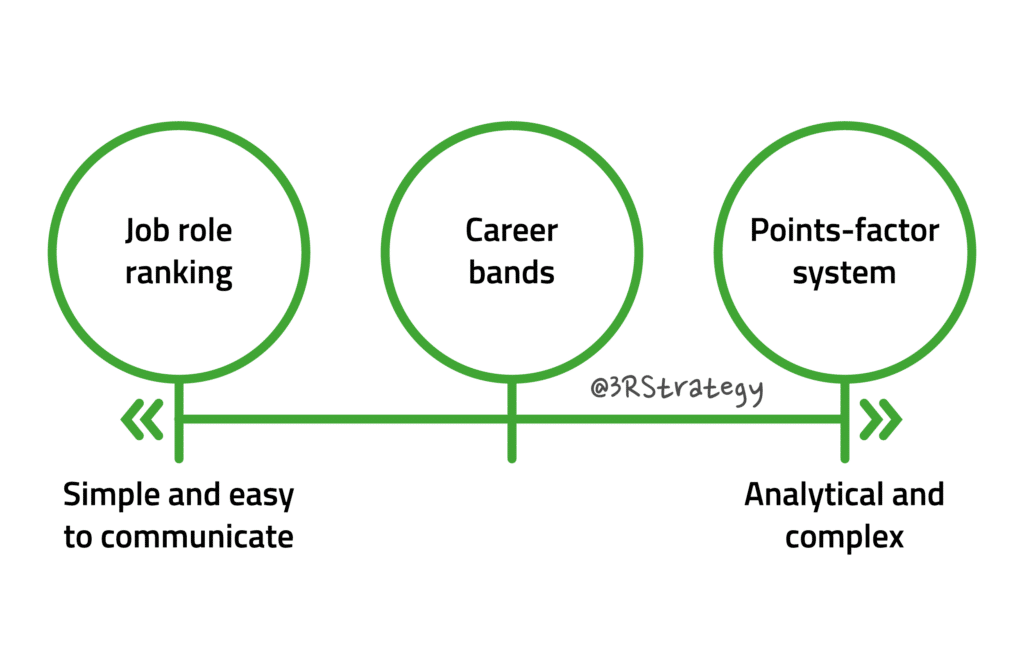Job evaluation ensures consistency in how we assess the complexity and responsibility levels of roles, preventing subjective decision-making based on personal biases.
The primary objective is to create a pay structure that is equitable and consistent. As a result, each employee is treated fairly. With this in mind, it also helps you to ensure your organisation is compliant with the Equality Act 2010.
According to Cordis, approximately 49% of European organisations in the private sector use a formal job evaluation scheme. However, SMEs make up less than 3% of that number. The absence of job evaluation can lead to unstructured and unfair pay practices.
What Does This Mean?
One of the significant advantages of this process is that it focuses on the role and not the person. It’s useful because job titles alone can be misleading, varying from company to company.
A job evaluation process starts with a thorough analysis, providing detailed job descriptions that reflect the responsibilities and complexity of each role. One of the crucial criteria in this evaluation is the job’s added value to the organisation.
The relative worth of a role equates to a ranking, which corresponds to a pay band within your organisation.

Why Do We Need To Do It?
In some cases, employees may request that their job be reassessed and that their pay grades be re-evaluated. For example, one of the reasons for a pay increase could be that the employee has taken on more responsibility.
Their main aim is to ensure they are being treated fairly. But other reasons for carrying out regular job evaluation may be:
- Integrating new technology into your workflow
- Restructuring of the organisation
- Changes in policies and procedures
- Changes in job descriptions or workload
- Promotions
- New positions
Methods of Job Evaluation
There are a few ways to carry out this process. Most of the well-known salary surveys, such as Willis Towers Watson, Radford, and Mercer all have their own approaches that are used by hundreds of organisations. This means that they are more generalised to suit different sectors and sizes of organisation.
Qualitative methods are usually faster, while quantitative methods are more objective and take into account required skills and responsibilities. Below is a list of the most common ways to carry out job evaluation:
- Ranking method
- Classification method
- Point-factor method
- Factor comparison method
Take a look at our blog on the bespoke method if you want a closer look at a tailored approach.

Career Frameworks
When you have a career framework in place, each role is evaluated and placed into one of your career bands or levels.
Each band/level has a pay range to enable you to manage salaries more effectively. From here, you can reward everyone consistently according to their skills and responsibilities, making informed decisions.
Having a career framework doesn’t mean everyone is on exactly the same salary. But if there are differences in contribution, you need to understand why those differences exist and identify cases where they are not warranted.
How to Get Managers On Board
Conclusion
Job evaluation is a vital process in ensuring fair pay within an organisation. While there are many methods that can be used, the best approach is often one that is tailored to the specific needs and size of the organisation.
To be transparent with and communicate honestly to employees, you need a process that is aligned with your organisation’s reward strategy and pay philosophy. An off-the-shelf approach will not offer the level of personalisation that a bespoke method does. You’ll be able to incorporate language and themes that reflect your organisation and brand.
If you’d like to find out more about how we create bespoke job evaluation frameworks at 3R Strategy, you can visit our services page.

